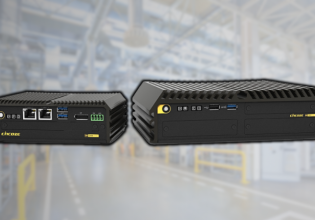NEC Develops AMR Control Technology Promoting Safety in Warehouses
Safety considerations of autonomous mobile robotics (AMRs) benefit from control technology changes that consider uncertain factors of the environment around the device.
NEC
NEC is a leader in the integration of IT and network technologies. They have focused on creating adaptability for communities and businesses to change with the rapidly changing business environment. NEC is building an environment where workers and businesses reach their full potential through social values of safety, security, fairness and efficiency. They operate under the brand statement of “Orchestrating a brighter world,” in hopes of creating a more sustainable world.
NEC has recently developed a new control method for autonomous mobile robots (AMRs). The technology is used to improve warehouse efficiency by increasing the speed of the robots without sacrificing safety. This advancement comes as a response to the recent decrease in labor availability and increased logistical issues resulting from the pandemic.

Technology developed by NEC can reduce safety hazards while maintaining efficiency. Image used courtesy of NEC
Risk-Sensitive Stochastic Control Technology
NEC has announced a risk-sensitive stochastic control technology that can be used for transport robots in warehouses. AMRs are used to transport products through warehouses. Warehouse efficiency and profits are directly related to the amount of product that can be moved through the warehouse in a given amount of time. With this in mind, the speed of mobile robotics operating in the warehouse is paramount to the viability of the robots in place.
One problem common among AMRs in already existing warehouses is finding that balance between robotic efficiency and worker safety. As robot speed, and therefore efficiency, increases, worker safety often goes down because the AMRs are operating with less reaction time for collision avoidance. NEC has developed risk-sensitive control technology in order to solve this problem.
Risk-sensitive control technology is capable of increasing AMR speed without the adverse effect of reducing worker safety. It does this by combining different technologies into one unified control system. It has been accomplished by utilizing models that can express uncertain factors that vary from one site to another, such as sensor measurement errors and differences between simulation results and actual robot movements. In addition to understanding uncertainties, the model has also taken into account methods used in actuarial finance.

Warehousing AMRs are commonly used for product storage and retrieval. Image used courtesy of Conveyco
The technology used in mathematical finance has been around for a while, NEC simply applied the same technology to robotics instead of finance. The system works by avoiding high risk. For finance, this equates to bankruptcy, but for AMRs the extreme risk equates to collisions. Using this method, the AMR is able to choose the fastest path by analyzing risk along the way in much the same way mathematical finance navigates risk in the business world.
The result is a robot that is able to speed up in low risk areas where workers and obstacles are not present, and slow down in high risk areas. High risk areas constitute places where the AMR has a higher likelihood of collisions or worker hazards. This combination has led to an increase in speed for AMRs that is double the speed of traditional methods. This allows for an increase in efficiency of 200% for the robots. Since the system is easily adaptable it makes it possible to integrate into existing warehouses without the need for robot-specific zones and lanes.






